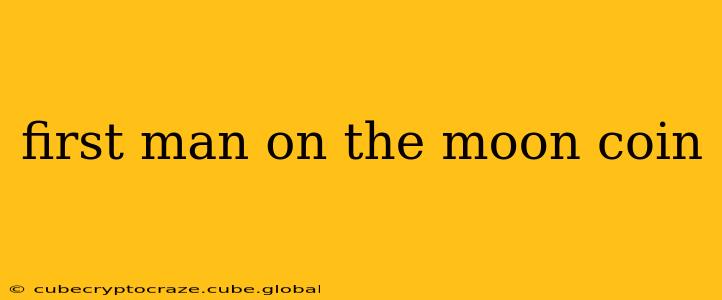The Apollo 11 mission's success in landing the first humans on the moon in 1969 captivated the world. This momentous achievement has inspired countless commemorations, and among the most intriguing are the numerous "First Man on the Moon" coins issued over the years. These coins aren't just currency; they're historical artifacts, capturing the spirit of a pivotal moment in human history and offering a fascinating glimpse into numismatic collecting. This guide explores the world of First Man on the Moon coins, delving into their history, value, and collecting aspects.
What Makes a "First Man on the Moon" Coin?
The term "First Man on the Moon coin" encompasses a broad range of commemorative coins. These aren't necessarily officially issued by governments to celebrate the event, though many are. They can vary widely in:
- Issuer: Governments worldwide have released official commemorative coins. Private mints also produce coins celebrating the Apollo 11 mission, often with unique designs and metals.
- Metal: These coins are struck in various metals, from common base metals like copper-nickel to precious metals like silver and gold. The metal content significantly impacts the coin's value.
- Design: Designs vary considerably, often featuring imagery of Neil Armstrong, Buzz Aldrin, the lunar module, the American flag on the moon, or the Earth as seen from the lunar surface. Some coins incorporate more abstract designs representing the event's significance.
- Rarity: The mintage (number of coins produced) plays a crucial role in determining a coin's rarity and value. Low mintage coins, especially those in precious metals, tend to be more valuable.
Are There Official Government-Issued "First Man on the Moon" Coins?
Yes, several countries issued official commemorative coins marking the Apollo 11 moon landing. These coins are typically legal tender within their respective countries, although their numismatic value often exceeds their face value. The designs and specifications vary based on the issuing country's preferences and minting capabilities. Researching specific coins from particular countries is vital for accurate valuation and understanding their historical context.
What Countries Issued Commemorative Coins?
Many countries issued commemorative coins marking the Apollo 11 mission. To name a few, the United States, Canada, and numerous other nations released special coins to mark this milestone event. The specific designs and specifications of these coins varied widely, offering collectors a broad range of options.
How Much Are First Man on the Moon Coins Worth?
The value of a "First Man on the Moon" coin depends on several factors:
- Rarity: Low mintage coins are generally more valuable than those with high mintages.
- Metal Content: Coins made from precious metals like gold and silver are inherently more valuable than those made from base metals.
- Condition: The condition of the coin significantly impacts its value. Uncirculated coins in pristine condition command higher prices than circulated or damaged coins.
- Demand: The popularity of a specific coin design or the overall interest in space exploration memorabilia influences its market value.
Determining the precise worth of a coin requires researching its specifications (metal, mintage, country of origin) and examining its condition using a grading scale. Reputable coin grading services can provide professional evaluations.
Where Can I Buy or Sell First Man on the Moon Coins?
You can find First Man on the Moon coins through various channels:
- Online Auction Sites: Websites like eBay offer a vast selection of coins, but exercising caution and due diligence is essential to avoid counterfeit items.
- Coin Dealers: Reputable coin dealers possess expertise in authentication and grading, providing valuable insights into coin value and authenticity.
- Coin Shows: Attending coin shows offers opportunities to examine coins in person, interact with dealers, and potentially find rare or valuable pieces.
Always ensure you buy from trusted sources to avoid fraudulent or counterfeit coins.
What Other Apollo 11 Memorabilia Exists Besides Coins?
Beyond coins, numerous other Apollo 11 memorabilia pieces exist, such as stamps, postcards, posters, and even pieces of moon rocks (though these are extremely rare and highly valuable). These items provide further avenues for collectors passionate about this pivotal moment in human history.
By understanding the factors influencing value and employing due diligence, collectors can embark on a rewarding journey into the world of "First Man on the Moon" coins, owning a piece of history and celebrating humanity's remarkable achievement.
